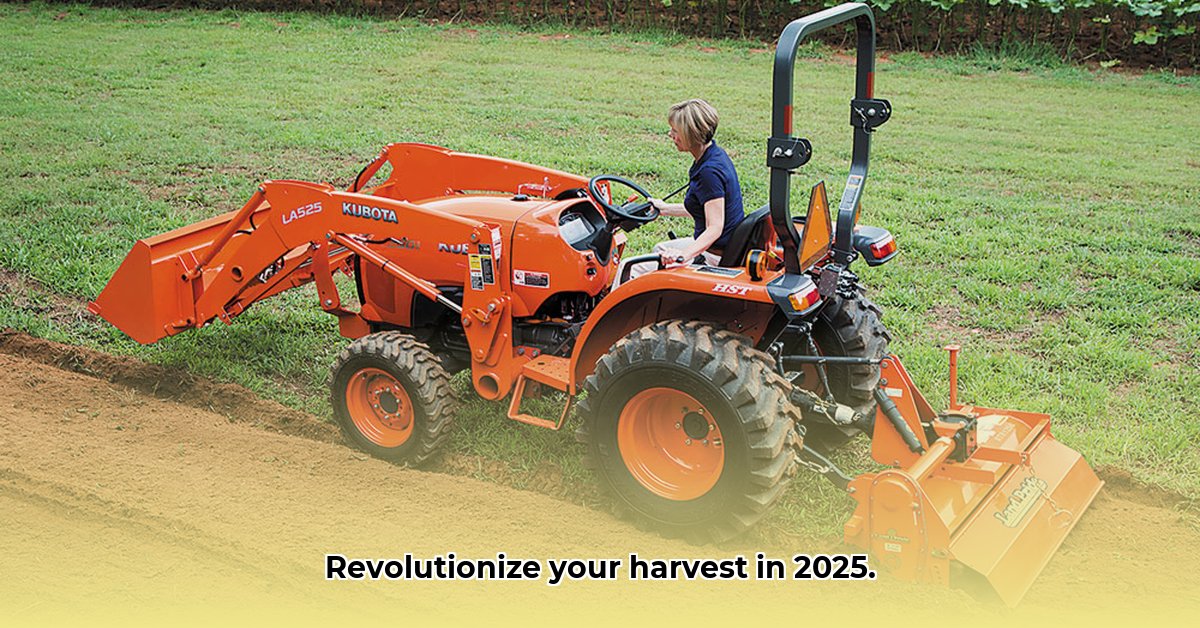
Getting the most from your land requires the right tools. For efficient soil preparation, a rotary tiller tractor attachment is invaluable. This comprehensive guide examines the market, focusing on popular brands while acknowledging the need for further independent research to solidify conclusions. We'll uncover what makes a good tiller, explore the features of prominent brands (separating fact from marketing), and highlight the critical need for more robust, independent testing. For more in-depth information, check out this detailed guide.
Rotary Tiller Tractor Attachments: Navigating the 2025 Market
Rotary tillers are indispensable for diverse agricultural operations, breaking up soil clods, incorporating organic matter, and creating ideal seedbeds. From compact backyard models to hefty agricultural implements, the choices are vast. The suitability of a tiller hinges on factors like operation scale, soil type, and budget. Choosing the wrong tiller is like using a hammer to drive a screw – inefficient and potentially harmful.
Sigma Tillers: A Detailed Examination
Sigma tillers are frequently cited in the market. Their marketing emphasizes several key features: a PTO slip clutch (protecting your tractor's transmission), a six-blade rotor design (for uniform soil preparation and extended blade life), an adjustable clevis hitch (enhancing ease of use), and easily replaceable tines (boosting efficiency).
While these features are appealing, it's crucial to remember that they are manufacturer claims. Independent verification is needed to substantiate these claims. Without third-party testing, the true performance of Sigma tillers against competitors remains uncertain. This lack of data prevents a definitive assessment of Sigma's market dominance.
Beyond Sigma: A Comparative Landscape
The rotary tiller market lacks comprehensive, independent comparative data. While Sigma is a well-known brand, a true assessment of its position relative to competitors such as the Gear-driven 7-ft Tillovator from Agrisupply is hampered by the absence of readily available details for comparative analysis. This data deficiency hinders informed decision-making for farmers seeking optimal tilling solutions. The need for independent testing is paramount to address this information gap. A comprehensive analysis demands rigorous, peer-reviewed data.
Actionable Recommendations for Stakeholders
For Farmers:
- Thorough Research: Don't solely rely on manufacturer claims. Consult independent reviews, if available, and gather feedback from other farmers.
- Needs Assessment: Carefully consider the size of your operation, soil type, and budget before making a purchase.
- Seek Expert Advice: Consult with your local agricultural extension agent or soil conservation specialist for tailored guidance.
For Manufacturers:
- Independent Testing: Invest in independent, third-party testing to verify product claims and build consumer trust.
- Data Transparency: Openly share your test results, highlighting both strengths and weaknesses.
- Innovation Focused on Sustainability: Develop features that address farmer needs and promote environmentally responsible practices.
For Research Institutions:
- Comparative Studies: Conduct rigorous studies comparing tiller performance across diverse soil types and operating conditions.
- Publication and Dissemination: Ensure your findings are publicly accessible to farmers, manufacturers, and policymakers.
- Industry Collaboration: Partner with manufacturers to improve testing methodologies and industry standards.
Rotary Tiller Risk Assessment
| Feature/Technology | Risk Category | Likelihood | Impact | Mitigation |
|---|---|---|---|---|
| PTO Slip Clutch Failure | Mechanical Failure | Low | Medium | Regular maintenance, consider redundant systems |
| Blade Wear and Tear | Operational Degradation | Medium | Low | Timely inspection, blade replacement |
| Soil Condition Variability | Operational Inefficiency | High | Low | Adaptive tilling, careful pre-planting soil tests |
| Lack of Comparative Data | Information Asymmetry | High | Medium | Demand independent testing and transparent results |
| High Initial Investment Cost | Financial Risk | Medium | Medium | Thorough ROI analysis, explore financing options |
Regulatory Compliance and Future Outlook
Adherence to all safety and emission standards is crucial. Consult local and national authorities for compliance details. The future holds exciting advancements in rotary tiller technology, promising increased efficiency, sustainability, and performance. Ongoing research in soil health and sustainable agriculture will undoubtedly shape the next generation of these crucial tools.
How to Compare Tractor Rotary Tillers for Sustainable Outcomes
Key Considerations:
- Tiller Width: Ensuring the tiller width aligns with tractor capabilities is critical for performance and avoiding damage.
- Drivetrain Type: Gear-driven tillers offer superior durability; chain-driven models are more affordable but may require more maintenance.
- Soil Type: Soil conditions significantly influence tiller selection and effectiveness.
- Maintenance: Regular cleaning and lubrication are crucial for optimal performance and longevity.
- Data Gaps: The lack of readily available, independent comparative data necessitates a cautious approach when assessing tiller performance.
This guide helps farmers make informed decisions, but the absence of comprehensive, independent testing data remains a hurdle. Further research is critical for enhancing decision-making in this important sector of agricultural technology.